Samsung has just launched the Galaxy S23 Ultra, marking a new entry in the best and most powerful Samsung phones you can buy. The S23 Ultra represents the peak of the company’s ambitions, with more cutting-edge hardware than most will know what to do with. That said, the latest Ultra will still feel quite familiar to fans of the series.
In fact, we can trace much of this latest model’s identity back to the Galaxy S20 Ultra, the first of its name. If you jumped onto the S20 Ultra bandwagon, it’s been a good three years, and probably time to swap out to something new. But should the S23 Ultra be the device that you jump to? We compare the Galaxy S23 Ultra vs the Galaxy S20 Ultra to find out how far the company has progressed with its marquee flagship, and if it’s worth blessing it again with your money.
Samsung Galaxy S23 Ultra vs Galaxy S20 Ultra: At a glance
Here’s a quick summary of the big differences between Samsung’s 2023 flagship and Samsung’s 2020 flagship:
- The latest Qualcomm Snapdragon 8 Gen 2 powers the new flagship across the globe, marking a clear departure from the split Exynos-Qualcomm regional strategy on the old flagship.
- The Galaxy S23 Ultra comes with an integrated S Pen stylus.
- The Galaxy S23 Ultra is missing a microSD card slot, but you can kit the phone out to a higher 1TB storage option in many regions.
- The camera hardware sees the biggest upgrade, with a 200MP primary camera as the highlight, up from the 108MP primary camera.
Keep reading to know more about how the Galaxy S23 Ultra and S20 Ultra differ from each other.
Samsung Galaxy S23 Ultra vs Galaxy S20 Ultra: Specs
| Samsung Galaxy S23 Ultra | Samsung Galaxy S20 Ultra | |
|---|---|---|
|
Display |
Samsung Galaxy S23 Ultra
6.8-inches AMOLED Edge display (curved) |
Samsung Galaxy S20 Ultra
6.9-inches AMOLED |
|
Processor |
Samsung Galaxy S23 Ultra
Qualcomm Snapdragon 8 Gen 2 |
Samsung Galaxy S20 Ultra
USA: Qualcomm Snapdragon 865 5G |
|
GPU |
Samsung Galaxy S23 Ultra
Qualcomm Adreno 740 |
Samsung Galaxy S20 Ultra
USA: Qualcomm Adreno 650 |
|
RAM |
Samsung Galaxy S23 Ultra
8GB or 12GB LPDDR5X |
Samsung Galaxy S20 Ultra
12GB or 16GB LPDDR5 |
|
Storage |
Samsung Galaxy S23 Ultra
256GB, 512GB, or 1TB |
Samsung Galaxy S20 Ultra
128GB, 256GB, or 512GB |
|
Battery and charging |
Samsung Galaxy S23 Ultra
5,000mAh battery |
Samsung Galaxy S20 Ultra
5,000mAh battery |
|
Cameras |
Samsung Galaxy S23 Ultra
Rear:
– 200MP main 0.6 μm, f/1.7, 85-degree FoV 1/1.3-inch sensor OIS and EIS – 12MP ultrawide – 10MP telephoto – 10MP periscope – Laser AF Front: |
Samsung Galaxy S20 Ultra
Rear:
– 108MP main 0.8 μm, f/1.8, 79-degree FoV 1/1.33-inch sensor OIS and EIS – 12MP ultrawide – 48MP periscope – 0.3MP ToF sensor Front: |
|
Video |
Samsung Galaxy S23 Ultra
Rear:
8K at 24/30fps (main lens only) 4K at 30/60fps (all lenses) Front: |
Samsung Galaxy S20 Ultra
Rear:
8K at 24fps (main lens only) 4K at 30/60fps (all lenses) Front: |
|
Audio |
Samsung Galaxy S23 Ultra
Stereo speakers |
Samsung Galaxy S20 Ultra
Stereo speakers |
|
Connectivity |
Samsung Galaxy S23 Ultra
5G (mmWave + Sub6) |
Samsung Galaxy S20 Ultra
5G (mmWave + Sub6) |
|
Security |
Samsung Galaxy S23 Ultra
Ultrasonic under-display fingerprint sensor |
Samsung Galaxy S20 Ultra
Ultrasonic under-display fingerprint sensor |
|
IP rating |
Samsung Galaxy S23 Ultra
IP68 |
Samsung Galaxy S20 Ultra
IP68 |
|
S Pen support |
Samsung Galaxy S23 Ultra
Yes, integrated |
Samsung Galaxy S20 Ultra
No |
|
Software |
Samsung Galaxy S23 Ultra
Android 13 |
Samsung Galaxy S20 Ultra
Android 10, upgradeable to Android 13 |
|
Materials |
Samsung Galaxy S23 Ultra
Gorilla Glass Victus 2 on the front and back |
Samsung Galaxy S20 Ultra
Gorilla Glass 6 on the front and back |
|
Dimensions and weight |
Samsung Galaxy S23 Ultra
163.4 x 78.1 x 8.9 mm |
Samsung Galaxy S20 Ultra
166.9 x 76 x 8.8 mm |
|
Colors |
Samsung Galaxy S23 Ultra
Phantom Black, Cream, Green, Lavender; |
Samsung Galaxy S20 Ultra
Cosmic Grey, Cosmic Black, Cloud White |
The Galaxy S23 Ultra and the Galaxy S20 Ultra are similar in a lot of ways — they’re evolutions of the same product line, after all. But with a three-year difference between the two phones, some facets that have changed substantially.
The biggest change is the use of the latest Qualcomm Snapdragon 8 Gen 2 SoC in the Galaxy S23 Ultra. In fact, the S23 Ultra has a special version of the processor, branded as “Snapdragon 8 Gen 2 for Galaxy,” with a higher clock speed on the prime core compared to the regular variant of the processor. On the older Galaxy S20 Ultra, we have the Qualcomm Snapdragon 865 5G SoC in the US and the Exynos 990 in other parts of the world. These were flagship processors back in the day, but they can be squarely classified as mid-range chips now, thanks to impressive leaps in processing capabilities in recent years.
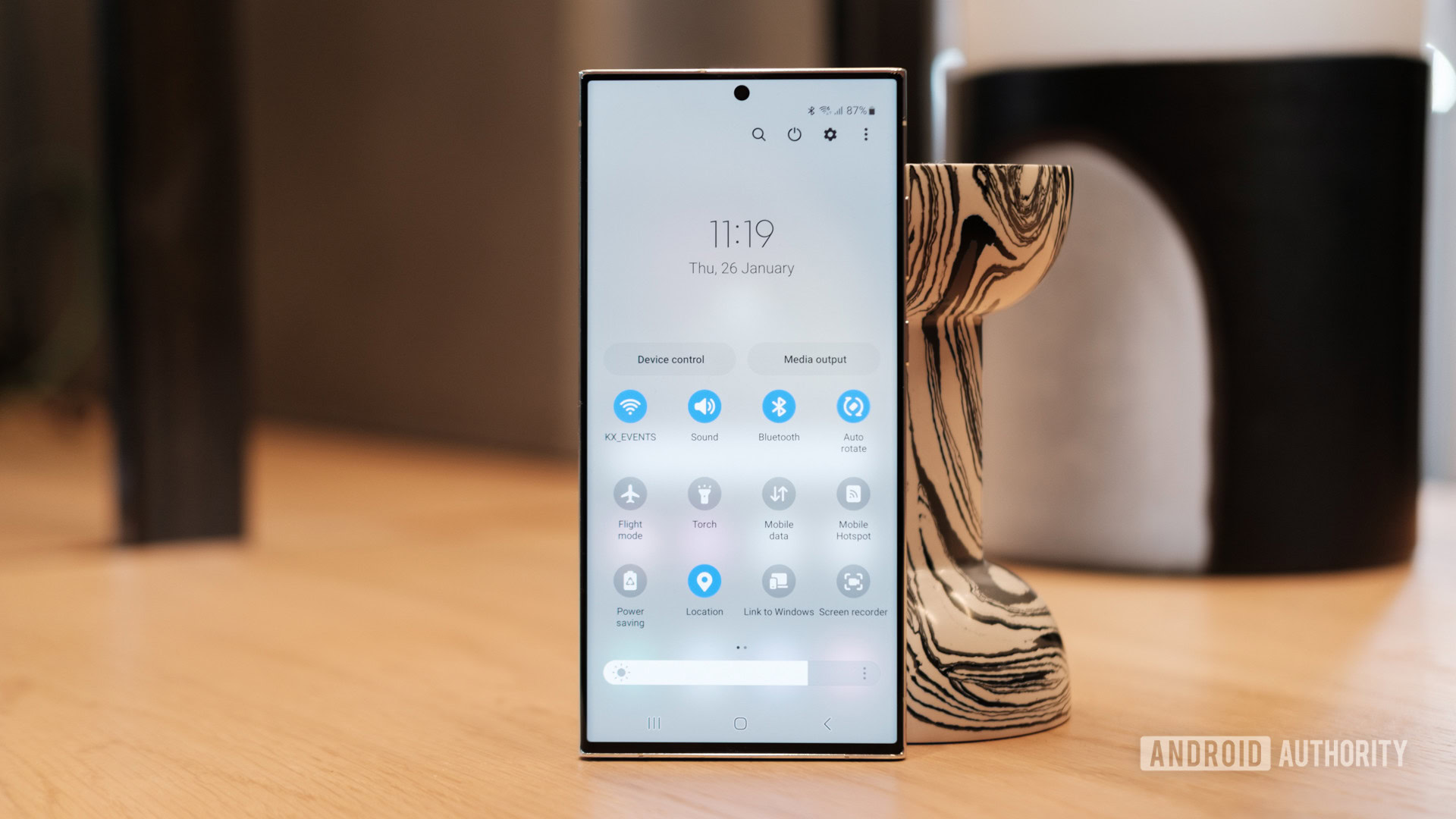
Robert Triggs / Android Authority
The second biggest difference between the two devices is the display. While the size and resolution remain roughly the same, the Galaxy S23 Ultra comes with an LTPO 3.0 panel which has a variable refresh rate range of 1Hz to 120Hz. The Galaxy S20 Ultra did not have an LTPO panel, so the phone can only choose between fixed steps of either 60Hz or 120Hz for its refresh rate. The S23 Ultra also has a higher peak brightness than the S20 Ultra, with this coming into play only for HDR content. The display curvature at the side edges is also different, as the new device has a slightly tighter curve, owing to its Galaxy Note ancestry.
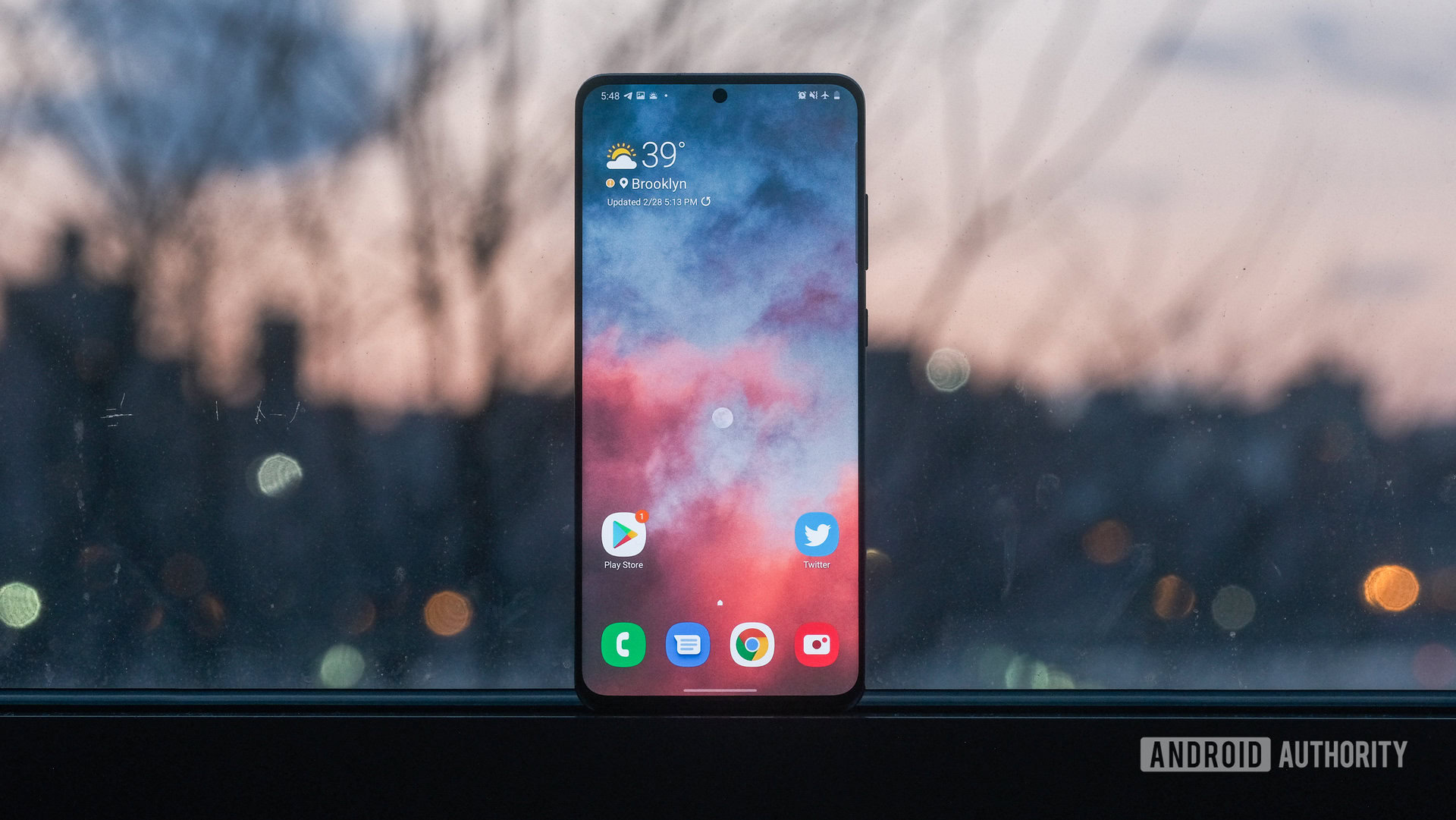
David Imel / Android Authority
Speaking of Note ancestry, the Galaxy S23 Ultra also boasts an integrated S Pen. The Galaxy S20 Ultra neither integrates an S Pen in its body, nor does it support an S Pen at all. When the S20 series was launched, the Galaxy Note lineup was in the midst of an identity crisis. Later on, Samsung merged the Note lineup with the S Ultra range, hence the presence of the S Pen on the 2023 flagship.
Galaxy S23 Ultra’s integrated S Pen gives it a definitive edge against the S20 Ultra
While the S23 Ultra gains a style, it lacks expandable storage. The Galaxy S20 Ultra supported microSD expansion up to 1TB, and it was the last S series flagship to do so. SD cards are slower compared to the internal UFS storage and prone to failure, but they still came in handy for people who created or consumed a lot of local media. There is a 1TB storage option on the Galaxy S23 Ultra, but as expected, it costs more. There’s a similar trade-off with RAM; you get more but slower RAM on the S20 Ultra (12GB/16GB LPDDR5), while you get less but slightly faster RAM on the S23 Ultra (8GB/12GB LPDDR5X). These are some areas where the Galaxy S20 Ultra is arguably the better device, as you get less base storage but expandability with it, and more RAM which is only slightly slower.
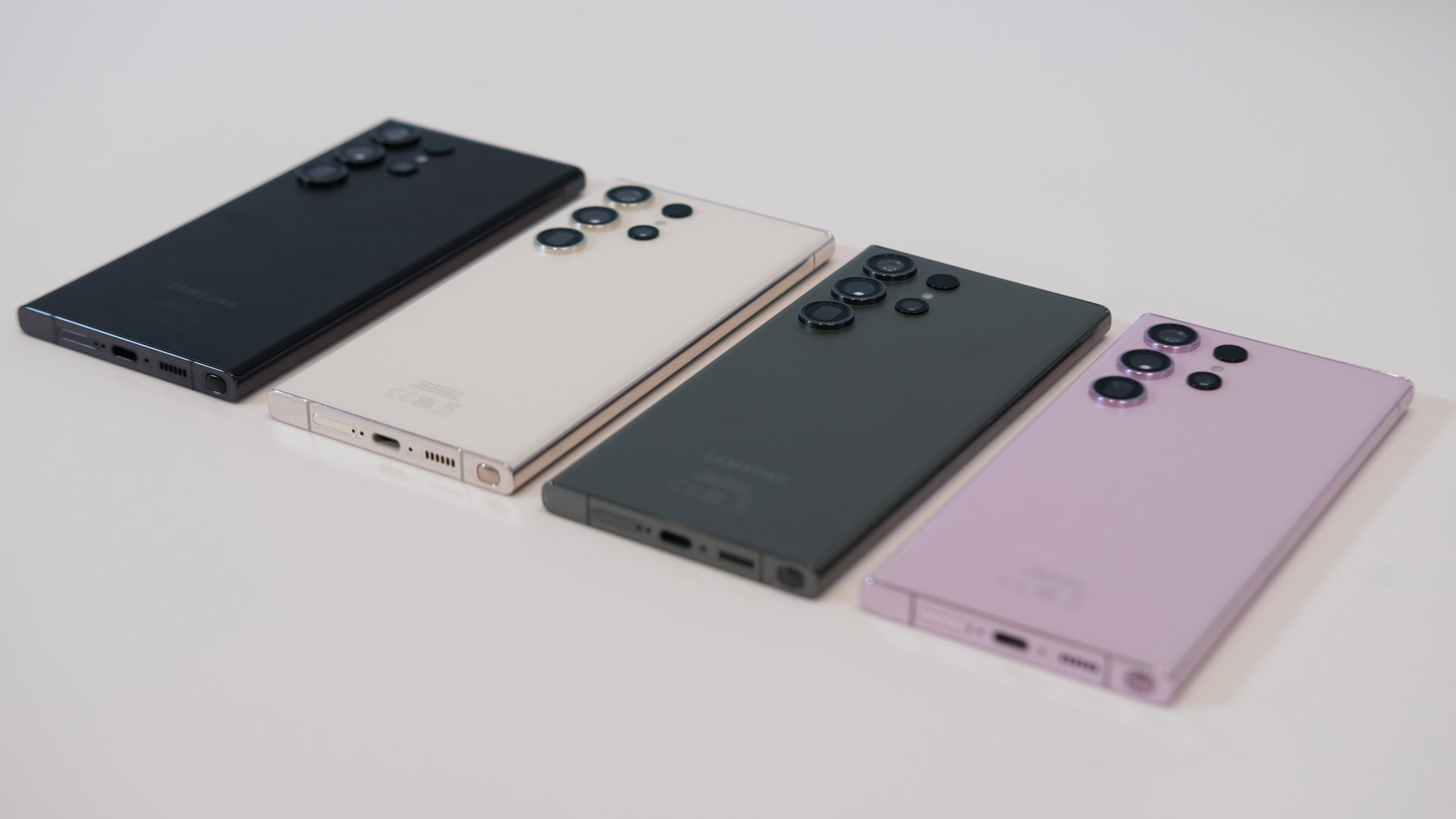
Robert Triggs / Android Authority
When it comes to build materials, both phones have an aluminum mid-frame. However, the Galaxy S23 Ultra has the latest Corning Gorilla Glass Victus 2 as opposed to Gorilla Glass 6 on the Galaxy S20 Ultra.
The Galaxy S23 Ultra also has a better camera setup on paper than the Galaxy S20 Ultra. But we’ll be talking about this in greater detail in a dedicated section below, so continue reading!
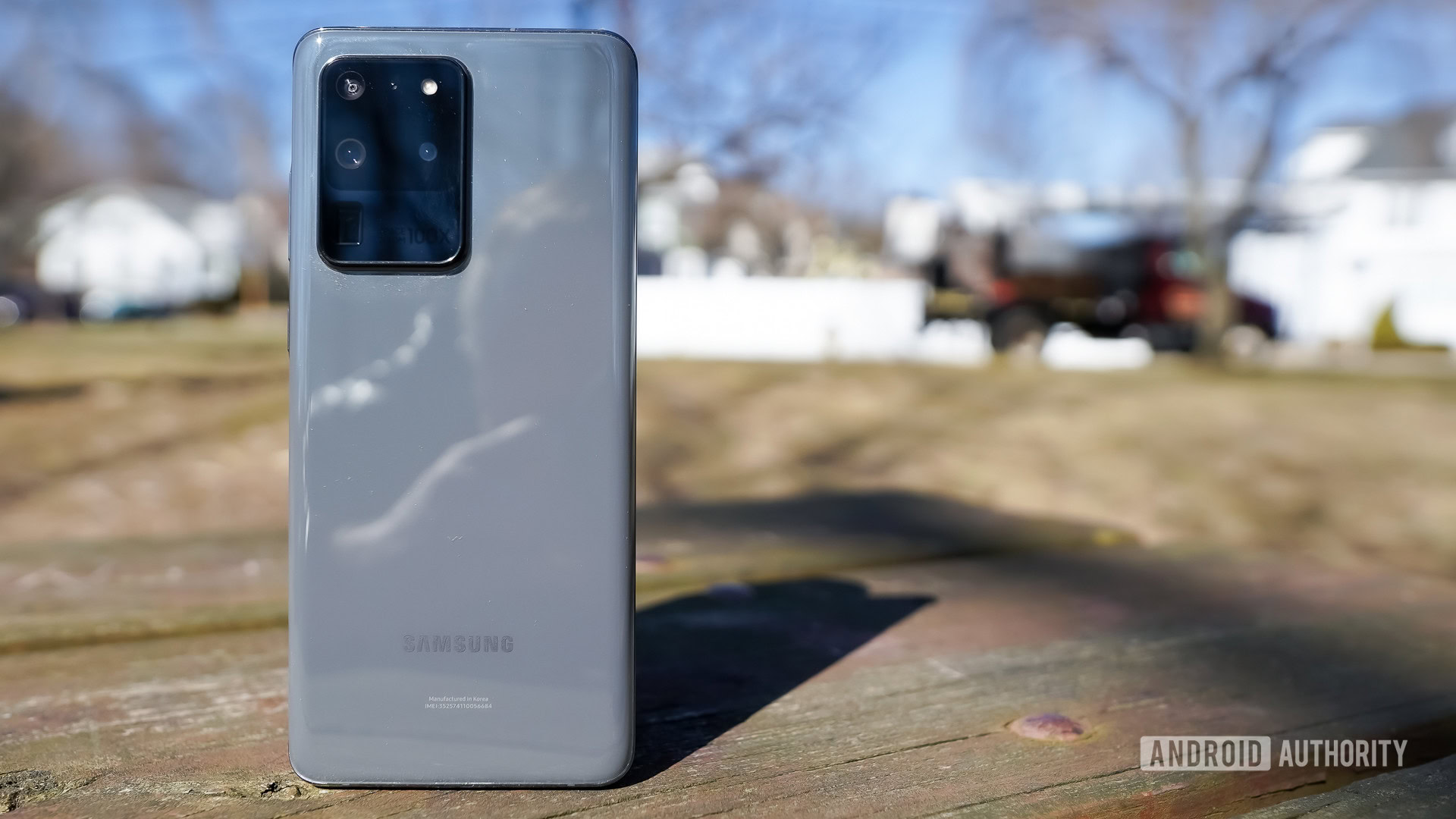
Another difference between the phones is their software support cycle. The Galaxy S20 Ultra launched in 2020 with Android 10 and One UI 2.1. Samsung promised three generations of Android updates and four years of security updates. Consequently, the Galaxy S20 Ultra has received its Android 13 and One UI 5 updates, as well as regular security patches up until this point. For the Galaxy S23 Ultra, Samsung is promising four generations of Android updates and five years of security patches. This means, the S23 Ultra will be upgradeable from Android 13 to Android 17 and will receive security patches up to 2028.
Samsung Galaxy S23 Ultra vs S20 Ultra: Size comparison
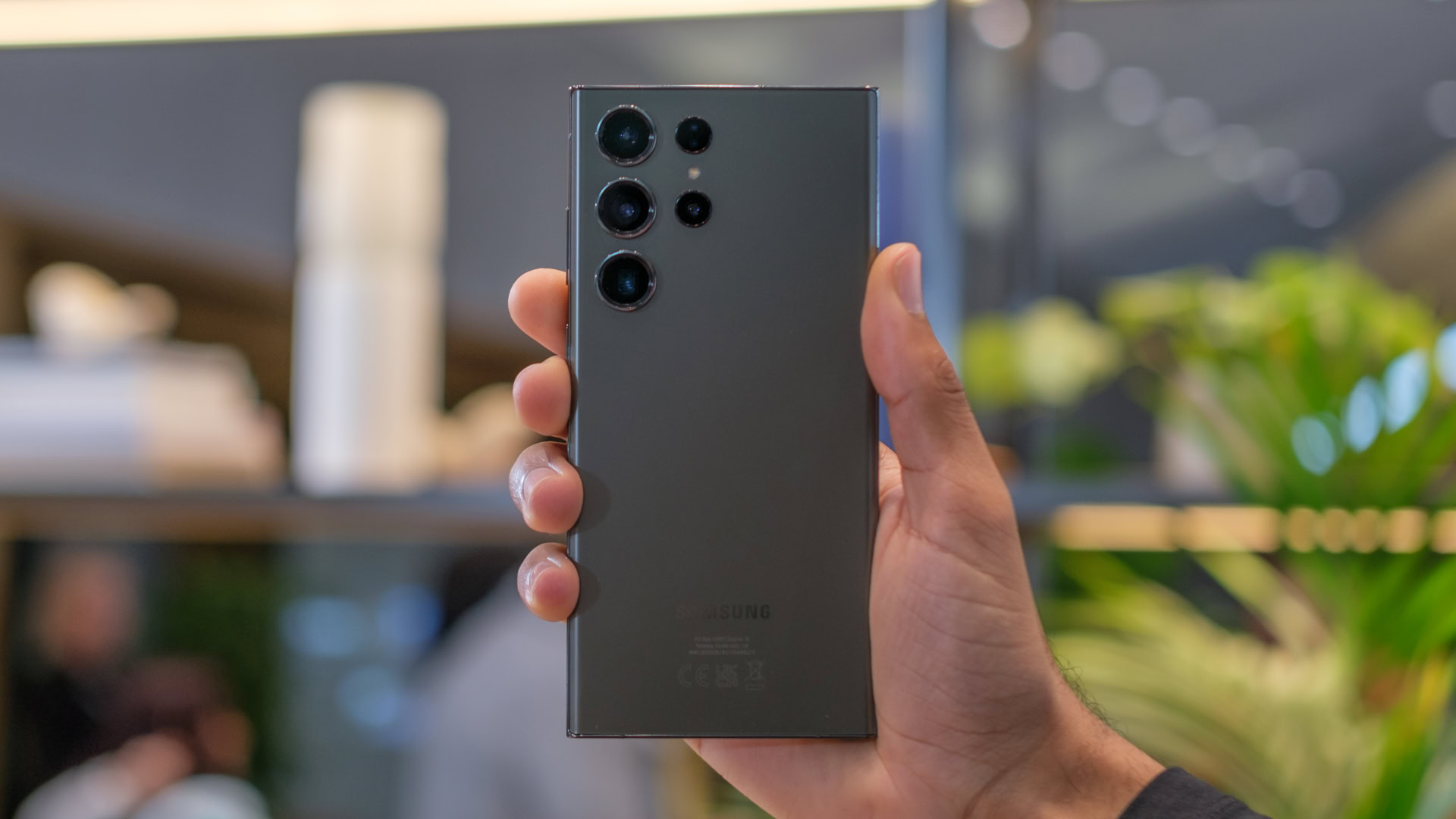
Robert Triggs / Android Authority
Both of these Samsung flagships are similar in size, with the S23 Ultra being very slightly leaner and taller. Though you wouldn’t notice unless you held them both side by side. The Galaxy S23 Ultra measures 163.4 x 78.1 x 8.9 mm, while the S20 Ultra measures 166.9 x 76.0 x 8.8 mm. Both phones also use an aluminum mid-frame construction with glass on the front and back.
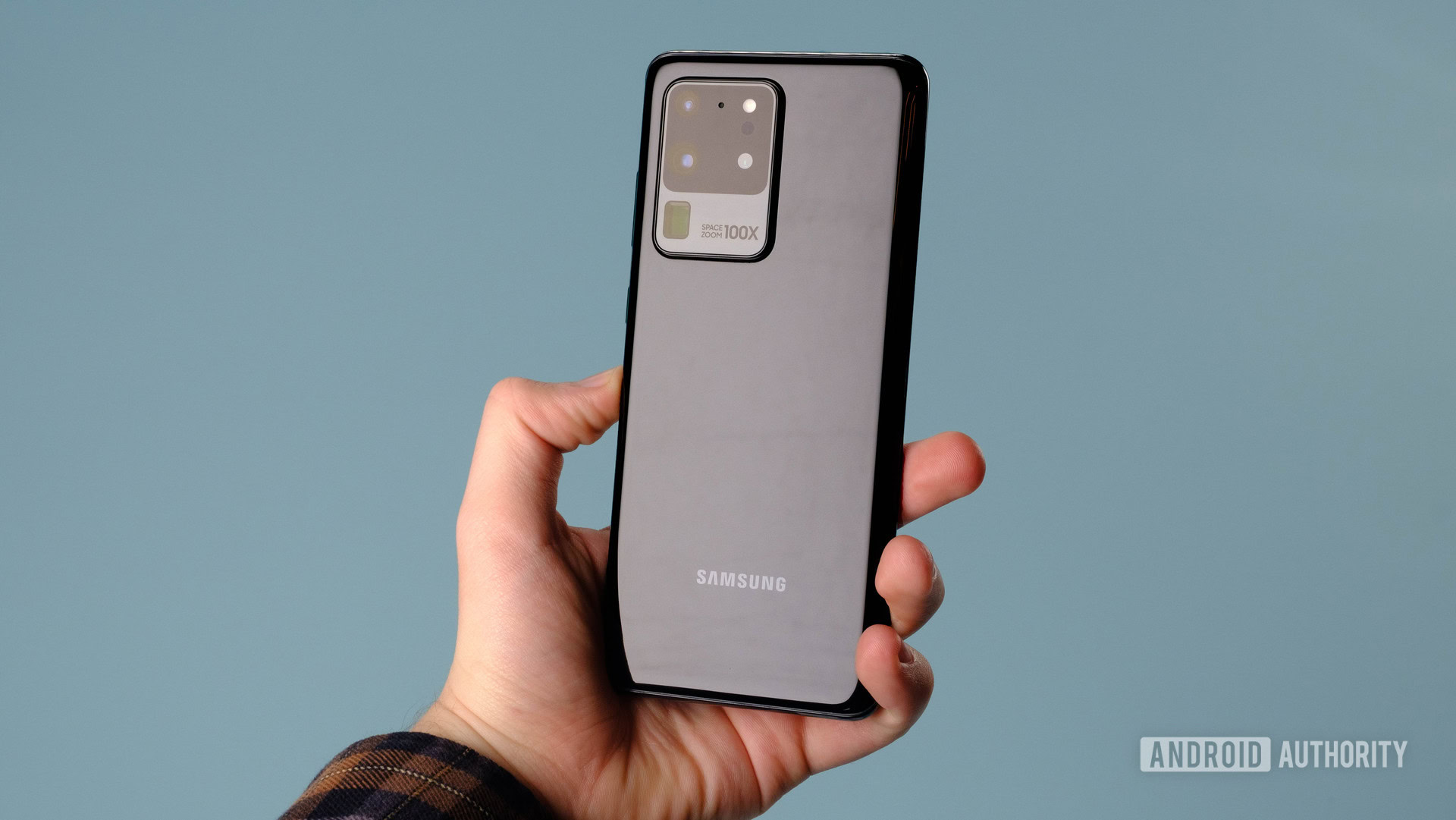
What you will notice easily are the different design approaches. The Galaxy S23 Ultra takes close inspiration from the Note lineup, while the Galaxy S20 Ultra maintains more of its S-appeal. The S23 Ultra has a boxier design with a flat top and bottom mid-frame, sharp corners, and a tight curvature on its sides. The S20 Ultra has rounded corners and a smoother curve on its sides. Make no mistake though, both of these are large phones and you will find it difficult to handle either with just one hand. The S23 Ultra is about 11g heavier than the S20 Ultra, accounting for the integrated S Pen and other internal layout changes.
Samsung’s design language has changed, but the Galaxy S23 Ultra and Galaxy S20 Ultra are both really big phones.
The back of the phones is another point of differentiation. The Galaxy S23 Ultra has a clean look with individual islands for its camera sensors. The Galaxy S20 Ultra, on the other hand, has a very large camera island that demands attention. Both phones will rock when placed on a table.
Samsung Galaxy S23 Ultra vs S20 Ultra: Camera
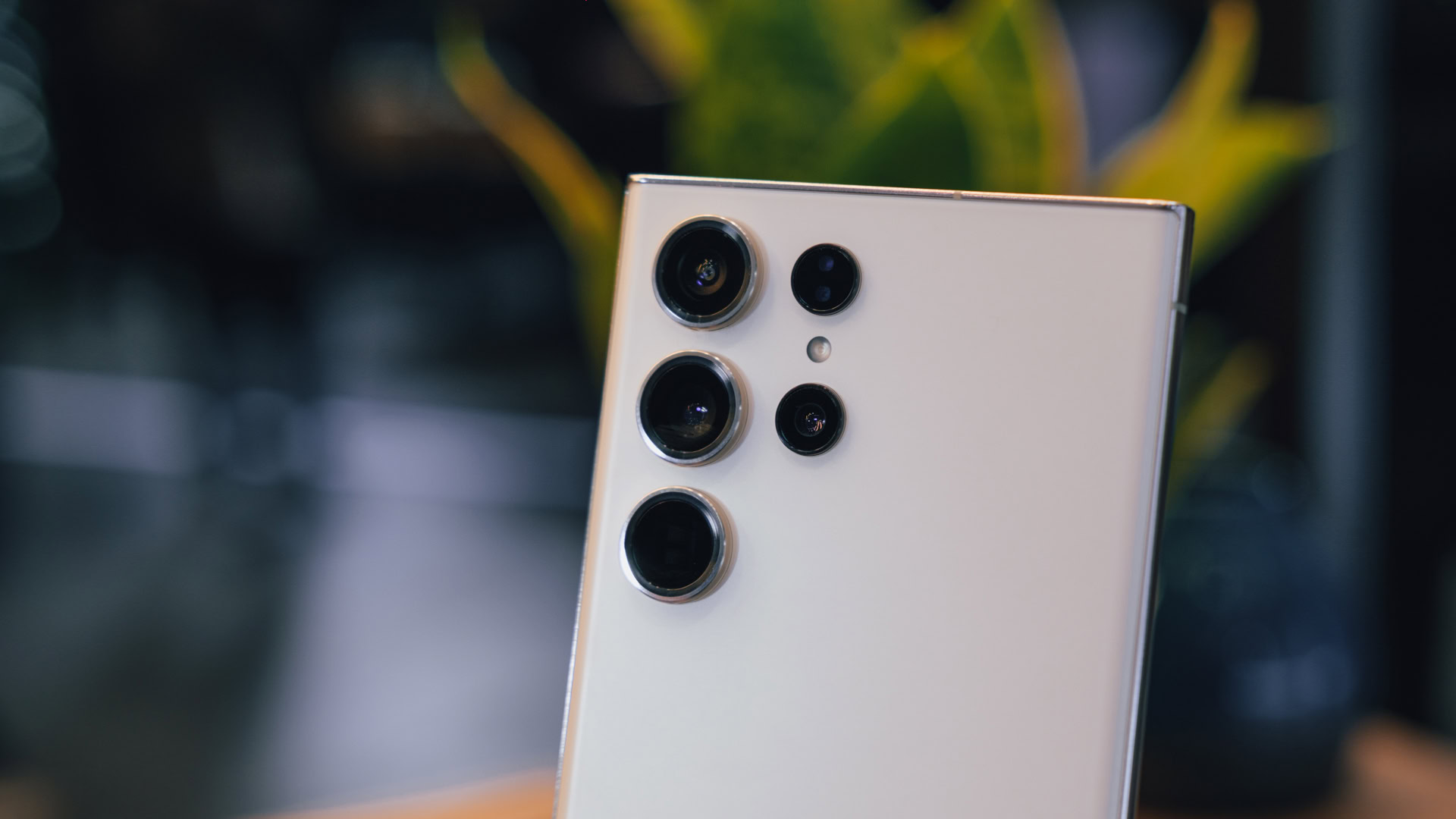
Robert Triggs / Android Authority
When it comes to cameras, both of these devices represent a significant jump in hardware for the S series. The Galaxy S20 Ultra was the first S series phone to come with a 108MP primary camera and periscope zoom lens; the Galaxy S23 Ultra is the first S series phone to come with a 200MP primary camera. The Galaxy S23 Ultra comes with four rear cameras, while the Galaxy S20 Ultra came with three cameras and a Time-of-Flight (ToF) sensor for measuring depth data.
The fundamental idea behind these large MP count setups is to capture a lot of data and then use pixel binning to merge several adjacent pixels into one. The S20 Ultra merges nine adjacent pixels (3×3) into one pixel to produce a 12MP image; whereas the S23 Ultra merges 16 adjacent pixels (4×4) into one pixel to produce a 12.5MP image. The result in both cases is impressive photos off the main camera, with ample light and good preservation of details.
Do note that since the S20 Ultra was Samsung’s early attempt at a large MP count camera, it has some trouble maintaining subjects in focus. Samsung subsequently resolved this by swapping out the ToF sensor for the Laser AF module on the Galaxy S21 Ultra, which you’ll find on the Galaxy S23 Ultra as well.
The Galaxy S-series saw big camera jumps with the S20 Ultra and again with the S23 Ultra.
The 12MP ultrawide angle camera has not seen much change across these devices, but the zoom approach has changed a lot. The Galaxy S20 Ultra opts for a 48MP periscope camera that can output 4x optical zoom; whereas the Galaxy S23 Ultra has a 10MP periscope camera that can output 10x optical zoom and a 10MP telephoto zoom that can output 3x optical zoom. All the magnification ranges in the middle are handled with a combination of optical and digital crops on both devices.
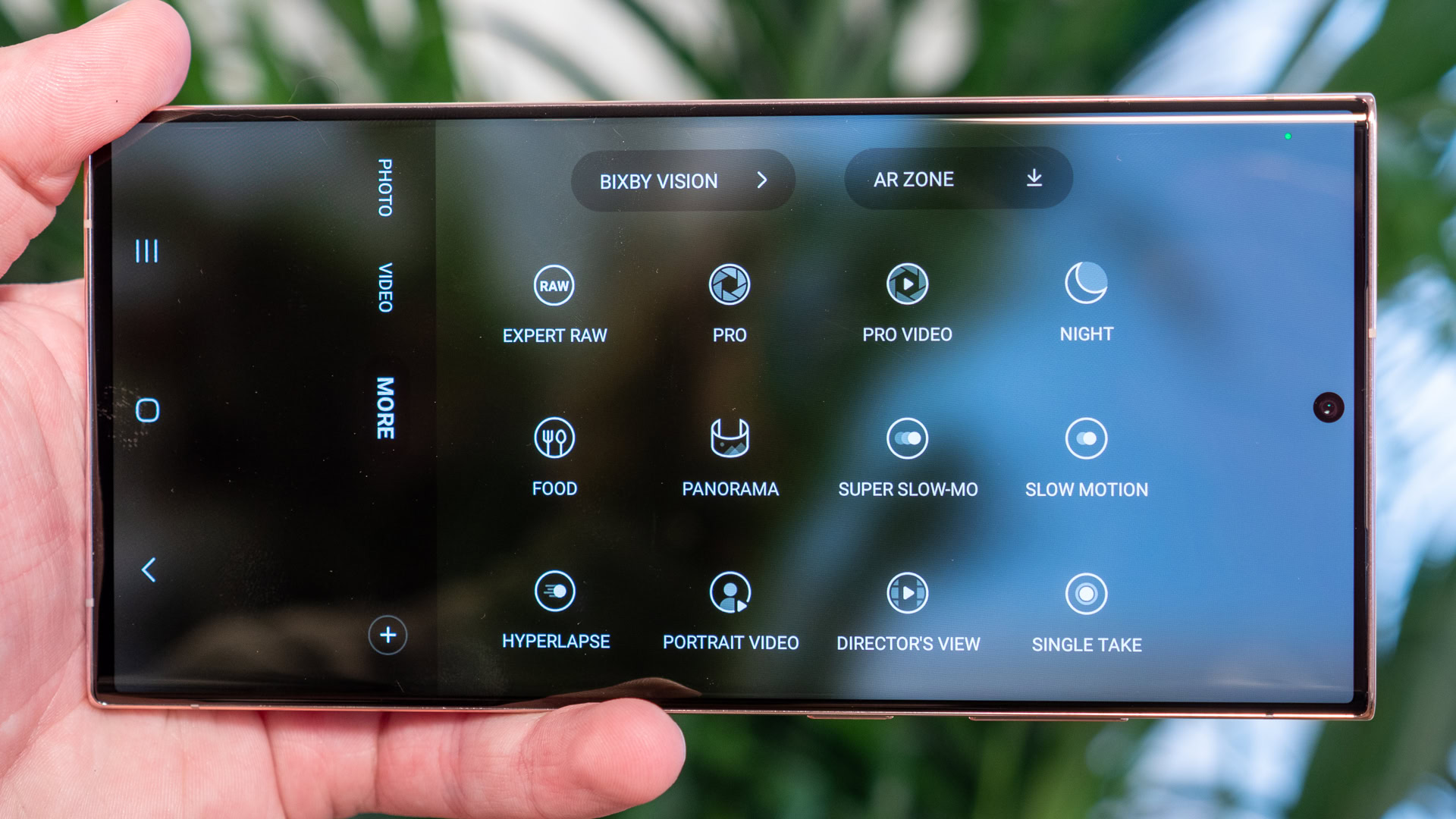
Ryan Haines / Android Authority
As expected, the Galaxy S23 Ultra performs significantly better in zoom performance. The presence of optical zoom at 3x and 10x ranges allows you to get very crisp images at these points, without needing any digital zoom. The 3x zoom not only adds versatility in how close or far you can be from your subject but also helps out with portrait shots. Further, Samsung has also made improvements in 30x and 100x digital zoom performance — these shots are unusable on the Galaxy S20 Ultra, but you can get some utility out of the ones clicked on the latest models.
Samsung has added plenty of camera features over the years, and it has shared them across previous generation devices too through One UI updates. The devices remain largely at par on camera features for now but expect the gap to widen in the coming years once the Galaxy S20 Ultra stops receiving feature updates.
Right off the bat, the Galaxy S23 Ultra has an edge with features like 8K 30fps video recording, improved Nightography, and Ultra Stabilization for shake-free videos. These features are tied to hardware changes, and so the Galaxy S23 Ultra will retain its lead in the coming years as well. But to its credit, the Galaxy S20 Ultra was one of the best camera phones of its time, and we’re expecting the same for the Galaxy S23 Ultra, although we reserve our final verdict until we review the device.
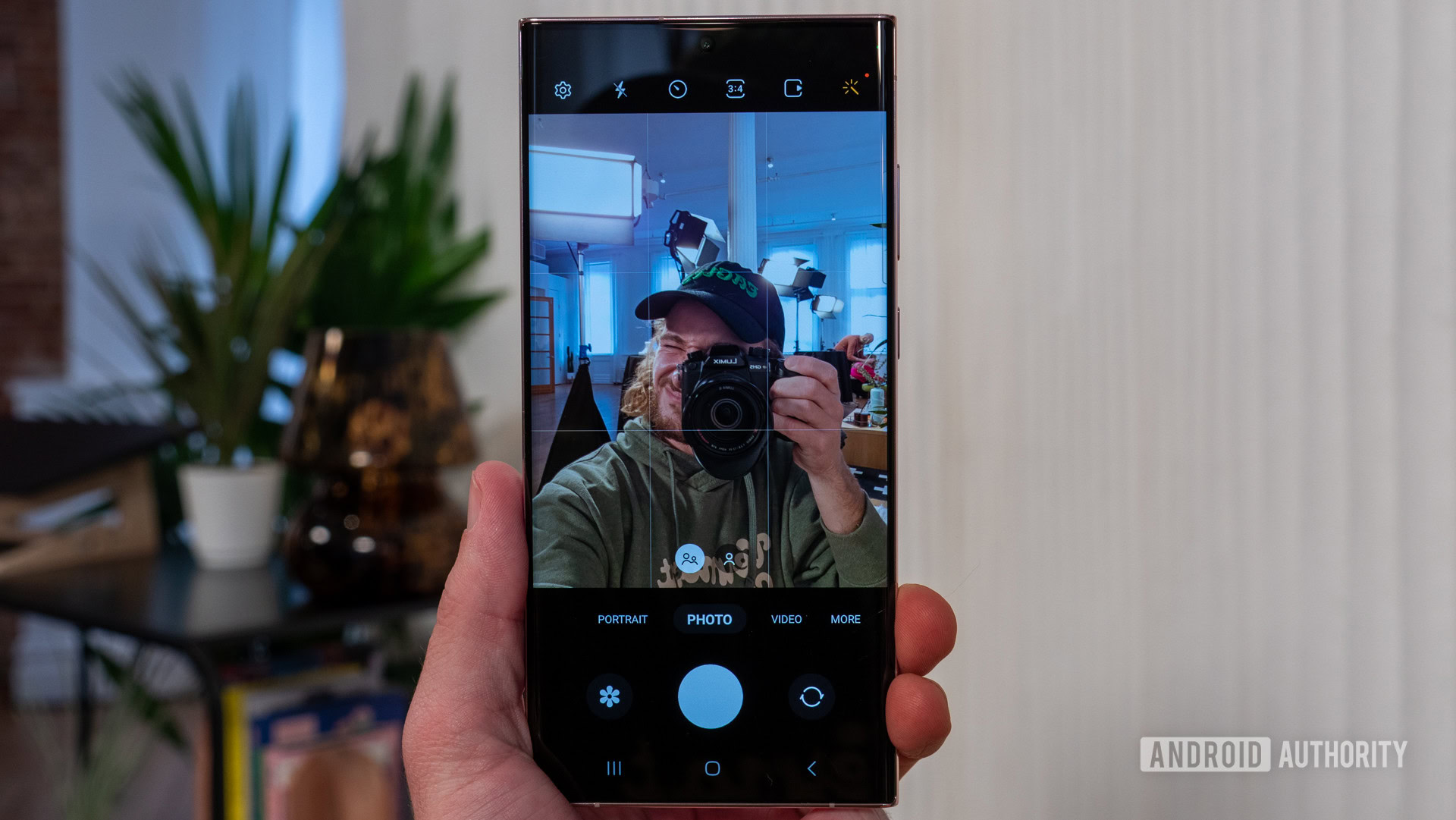
Ryan Haines / Android Authority
The Galaxy S23 Ultra comes with a 12MP selfie camera, compared to the 40MP camera on the Galaxy S20 Ultra (binned down to 10MP). The higher MP count on the older device may appear to be better at a cursory glance, but the newer ISP on the Snapdragon 8 Gen 2, Samsung’s processing, and AI magic will give you marginally better results on the Galaxy S23 Ultra in all situations. Again, we reserve our final verdict for the full Galaxy S23 review.
Samsung Galaxy S23 Ultra vs S20 Ultra: Battery and charging
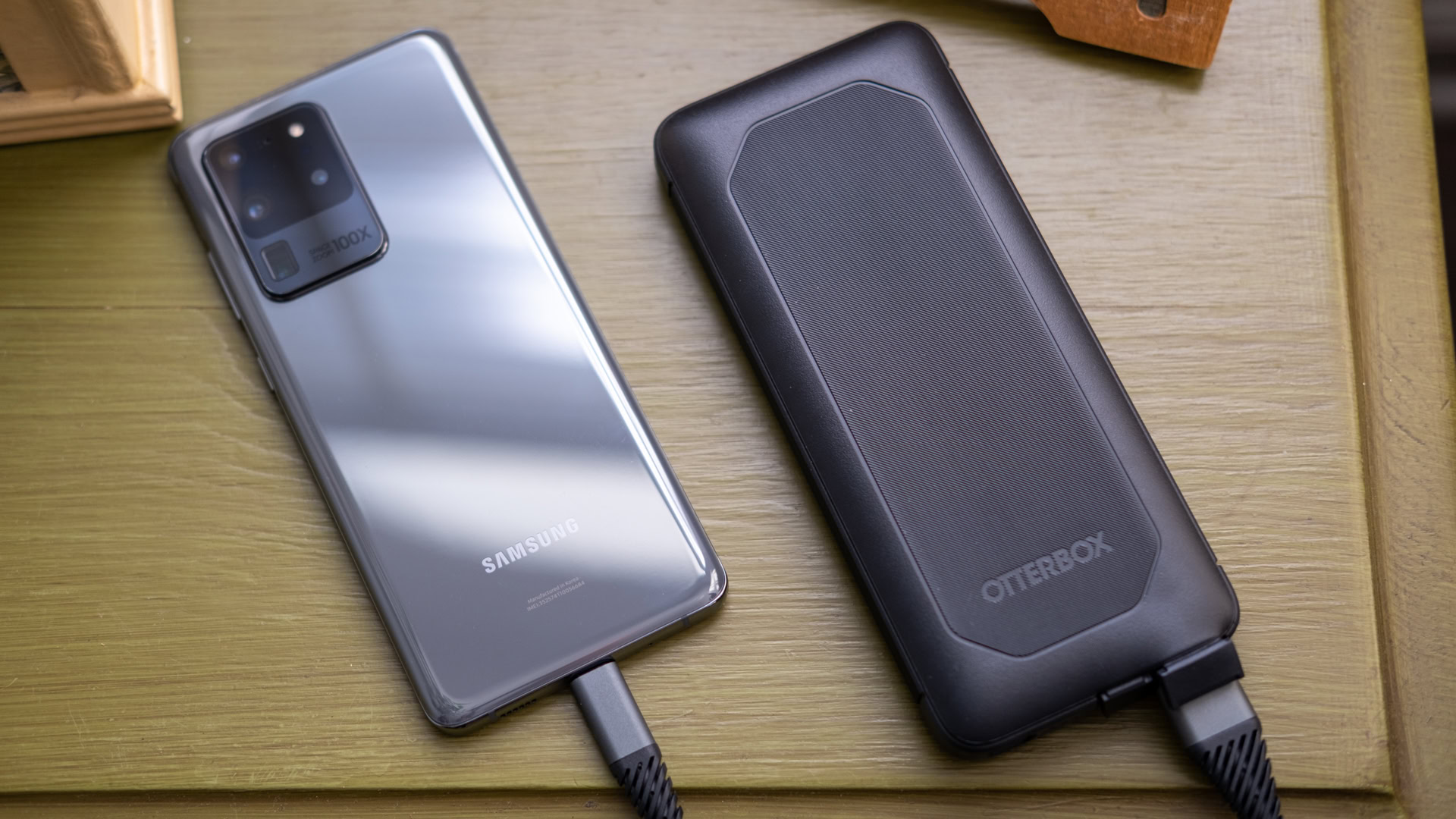
Ryan Haines / Android Authority
Despite the age difference, Samsung has made practically no changes to the battery and charging situation. Both phones come with a 5,000mAh non-removable battery that should last you through a good day and some. As mentioned in our review, the Galaxy S20 Ultra lasted through a full day with a couple of hours’ juice left in the reserve.
However, it is important to remember that the Galaxy S20 Ultra could only do either 120Hz at FHD+ resolution, or 60Hz at QHD+ resolution, but not 120Hz at QHD+ resolution. The Galaxy S23 Ultra can run at 120Hz at QHD+ resolution, but we remain confident of its full-day battery life. There’s even a chance it offers better battery life, thanks to a much more power-efficient chipset and the variable refresh rate feature. But it’s not possible to know how much of a difference it will make in real life until we review the phone, so stay tuned for that.
Battery and charging capabilities haven’t changed much over the years, but improved efficiency gives the S23 an edge.
Both phones support 45W Adaptive Fast Charge through a wired connection. Don’t be misled by the number though, as this 45W charging is barely improved from Samsung’s older 25W charging, even if you use a 45W charger. Expect to spend just over an hour charging either phone from zero to 100%. Both phone support 15W wireless charging, and also support reverse wireless charging.
What is different across the generations is that Samsung has removed the charging brick from the box. The Galaxy S20 Ultra comes with a 25W charging brick in the box, but the Galaxy S23 Ultra does not come with a charging brick in its box.
Samsung Galaxy S23 Ultra vs Galaxy S20 Ultra: Price
- Samsung Galaxy S23 Ultra (8GB/256GB): $1,199
- Samsung Galaxy S23 Ultra (12GB/512GB): TBC
- Samsung Galaxy S23 Ultra (12GB/1TB): TBC
- Samsung Galaxy S20 Ultra (12GB/128GB): $1,399
- Samsung Galaxy S20 Ultra (12GB/256GB): $1,499
- Samsung Galaxy S20 Ultra (16GB/512GB):$1,599
Galaxy S20 Ultra costs ~$300 for a refurbished unit in 2023
Surprisingly, Samsung managed to bring down and maintain the lower pricing on its Ultra flagship from the Galaxy S21 Ultra onwards. The starting price of the Galaxy S23 Ultra is $200 lower than that of the S20 Ultra, but the S23 Ultra still is one of the more expensive phones out there.
You can make the price of the Galaxy S23 Ultra more palatable if you purchase during the pre-order window. If you pre-order the device, Samsung will give you a free upgrade to the next storage version. There are also enhanced trade-in discounts of up to $100, letting you get an even better deal. The phone is available for pre-order from February 1, 2023 to February 16, 2023, with open sales beginning from February 17, 2023.
Samsung no longer sells the Galaxy S20 Ultra in its new condition. You can spot refurbished units on Amazon and pre-owned units on Swappa, for ~$300 depending on the condition of the phone. As the device ages further, expect it to go out of circulation.
Samsung Galaxy S23 Ultra vs Galaxy S20 Ultra: Should you upgrade?
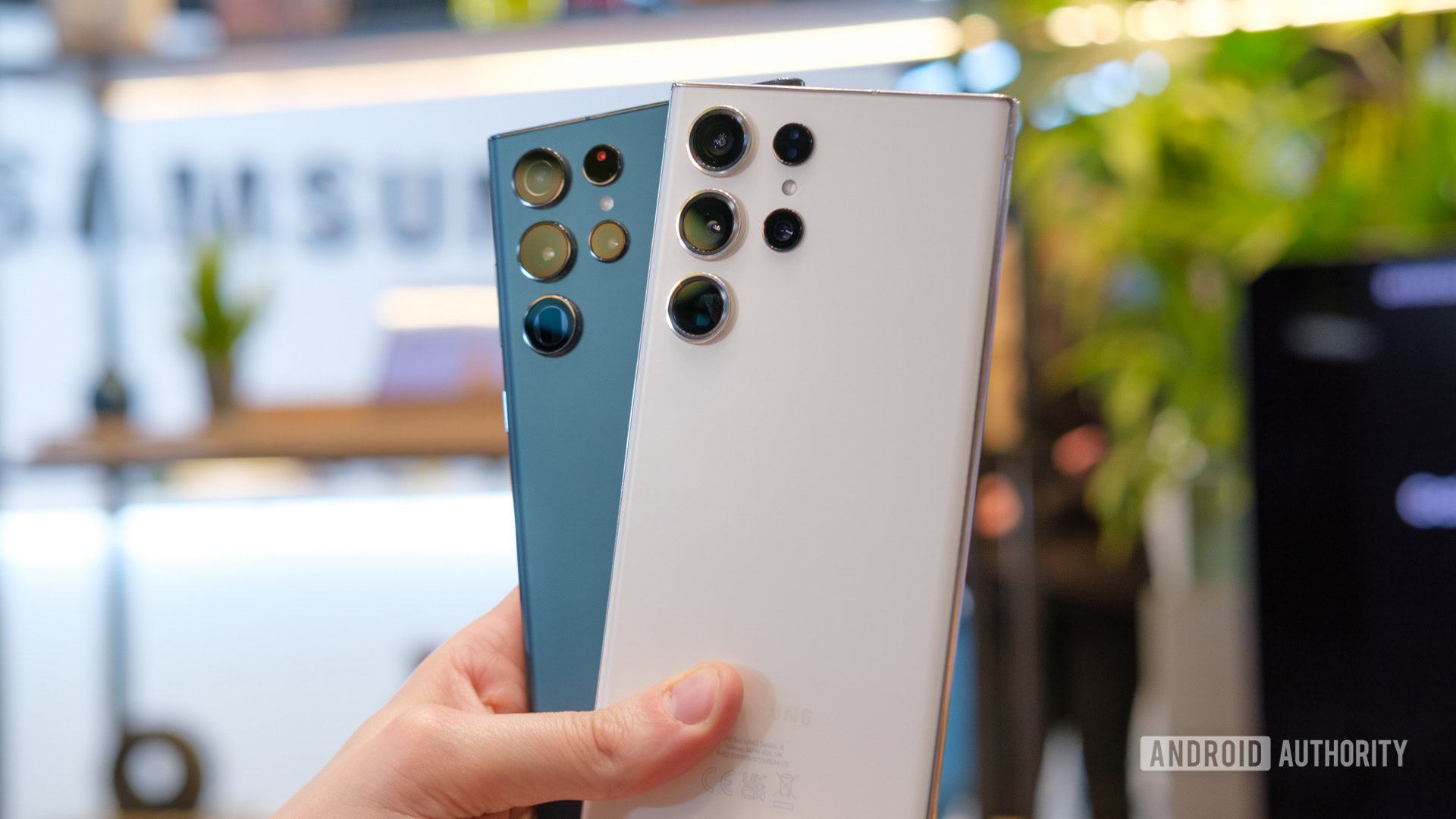
Robert Triggs / Android Authority
If you’ve followed along so far, the verdict is clear: the Galaxy S23 Ultra is the better device. That’s no shock, but the margin between the two devices is surprisingly not as large as you might expect, especially considering that the Galaxy S20 Ultra was launched three years ago. That is testimony to the fact that overkill specifications age gracefully because of the extra headroom.
The Galaxy S23 Ultra is a worthy upgrade for S20 Ultra owners.
Still, if you are out to buy a top-tier flagship, the Galaxy S23 Ultra is the obvious and clear choice. The Snapdragon 8 Gen 2 is an excellent chip that will not disappoint with its performance or efficiency. You also get an S Pen, which opens up new ways to interact with your device. And the fact that the Galaxy S23 Ultra will get up to Android 17 in the future and continue to receive security patches up to 2028 is also a big win when you are about to drop $1,199 on a phone.
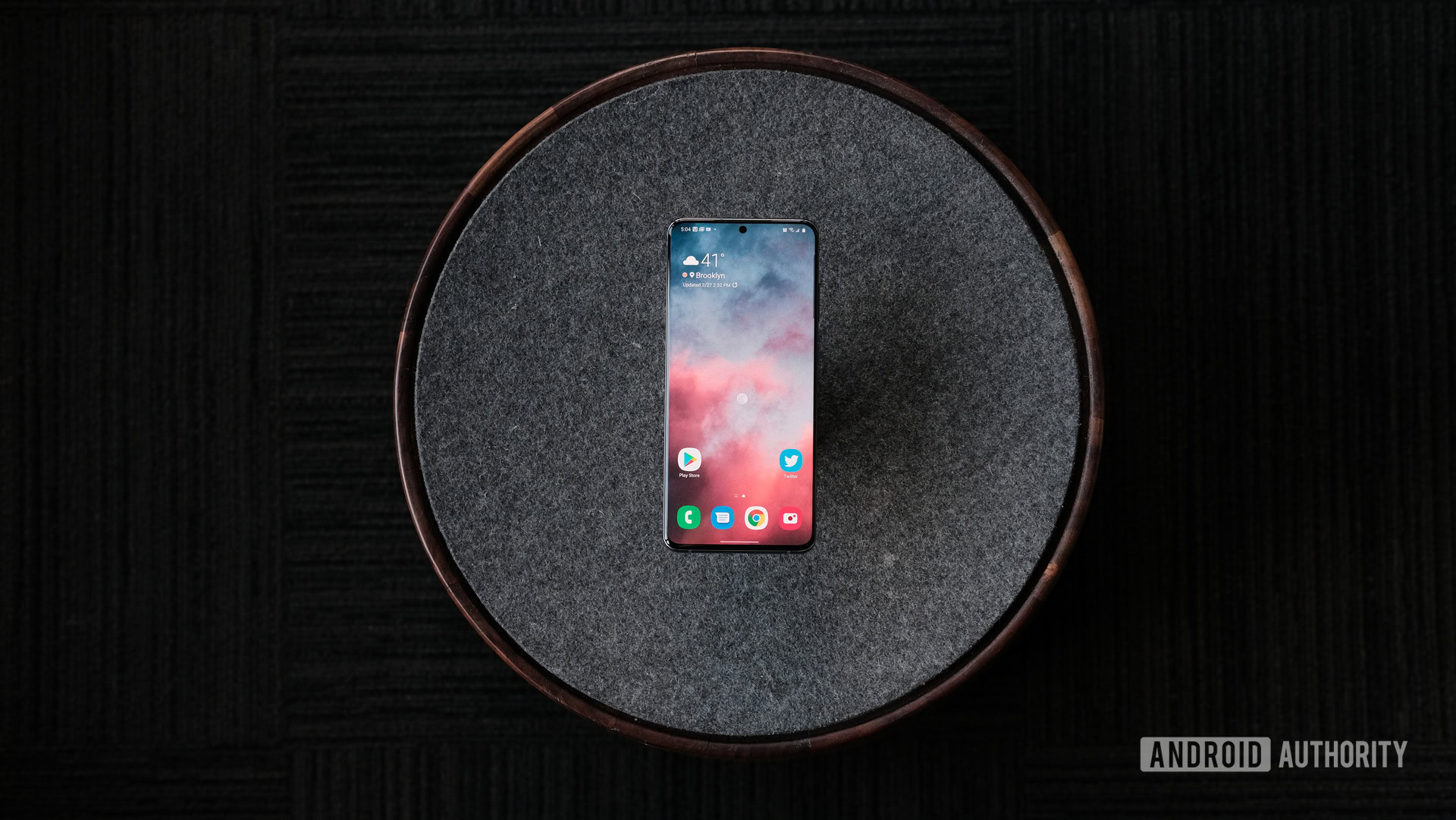
David Imel / Android Authority
The only advantages the Galaxy S20 Ultra has over the S23 Ultra are the presence of the microSD card slot and more RAM, but we do not consider both of these heavy enough to outweigh the upgrades the S23 Ultra brings to the table. While you can pick up the Galaxy S20 Ultra for cheap in a refurbished state and Samsung will still support your device with security patches (and you may possibly also receive a One UI 5.1 update), the longer-term prospects of the device are not that great. Instead, you might be interested in checking out other great budget phones.
Should you upgrade from the Galaxy S20 Ultra to the S23 Ultra?
57 votes
Of course, you could likely keep an existing Galaxy S20 Ultra ticking over for another year, if your device is still in good condition. Overall though, those looking to upgrade shouldn’t hesitate to jump at the Galaxy S23 Ultra. It’s an excellent choice.

8%off
Samsung Galaxy S20 Ultra
Gorgeous screen
Blazing-fast performance
Flexible cameras
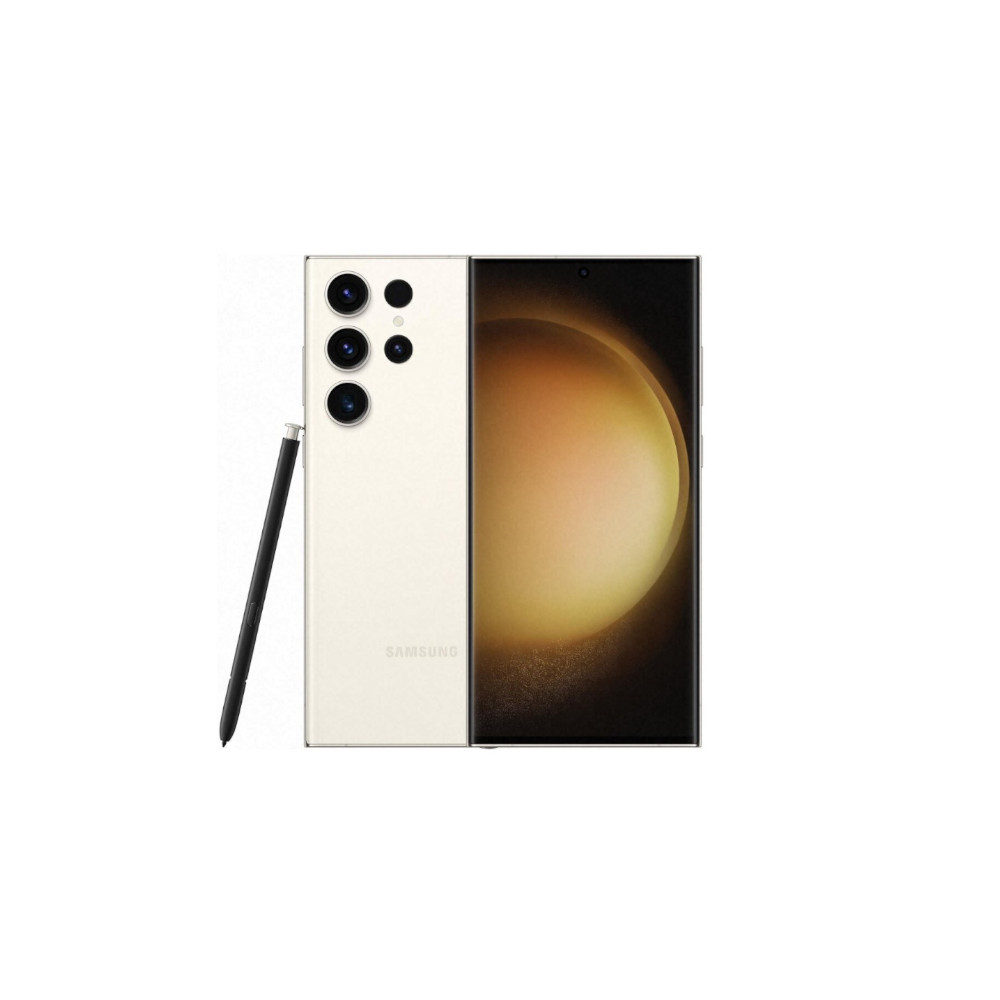
Samsung Galaxy S23 Ultra
New 200MP main camera
Beautiful display
S Pen functionality



